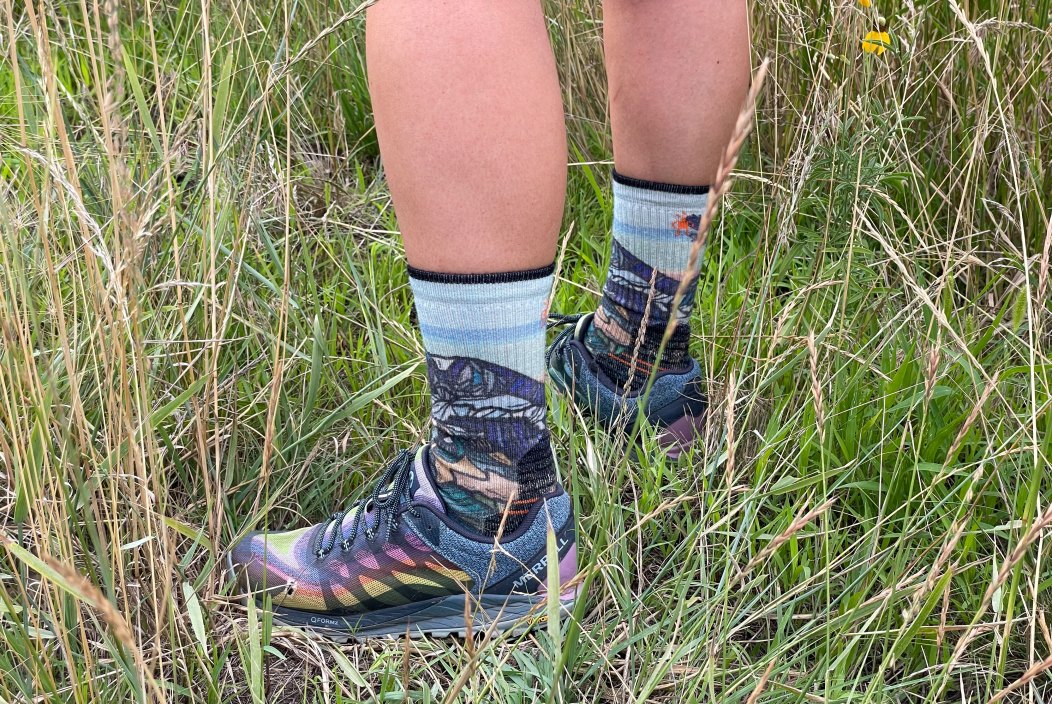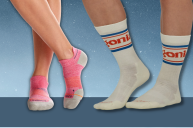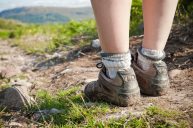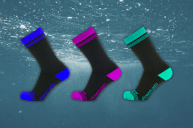Just after graduating from college, I spent two very rainy months building and maintaining trails in Kentucky's Daniel Boone National Forest. The cushionless, no-name men's socks I bought at Walmart may have been affordable, but they did not hold up hiking long miles through muddy trails and downpours. My feet would slide around in my hiking boots and blister from the friction, and, as the soggy socks (attempted to) dry in my tent, the smell was ripe.
Fast forward nearly 10 years, and as an avid hiker, backpacker, and environmental volunteer worker, I've had ample opportunity to learn the importance of what you wear on your feet.
That's why you can trust me when I wholeheartedly endorse Smartwool hiking socks: Made with merino wool and featuring extra cushioning in all the right spots, these trusty trail companions promise no sliding, no discomfort, and no odor, even after the sweatiest journeys. I put three pairs of Smartwool hiking socks to the test on a muggy 9-mile hike in South Dakota's Black Elk Wilderness as well as hot and dry daily walks near my Colorado home. I'm happy to report that they're as sturdy, comfortable, well-fitted, and odor-free as they claim to be.
Smartwool Hiking Socks Specs and Features
The three pairs of Smartwool women's hiking socks that I tested were the light cushion crew, the light cushion mid-crew, and the full cushion crew, all of which range from $23 to $26. Their fabric makeup is mainly merino wool blended with nylon, elastane, and polyester. The specs, as claimed by the manufacturer, include:
- Durable wool weave with '"extended durability zones" to prolong wear
- Mesh zones for breathability
- Virtually seamless toe for enhanced comfort
- Comfort welt that keeps the sock from twisting or shifting
- Performance-oriented and "women's specific" fit
- Made in the USA
How Smartwool Hiking Socks Performed
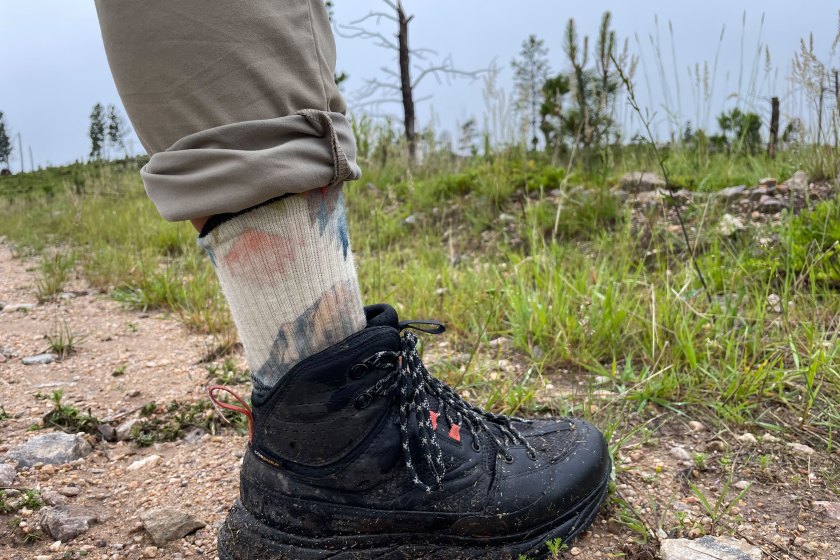
Paige Triola for Wide Open Spaces
I'd heard friends swear by Smartwool for their high-quality, durable, and comfortable socks, but I always balked at paying over $20 for a single pair. However, after trying them for myself while backpacking part of the Centennial Trail in South Dakota, I'm convinced they're well worth the price. They endured miles of tromping up rooty paths, climbing over slippery granite boulders, and hopscotching rocks on stream crossings, all without sliding around inside of my boots. Comfort and quality construction were the defining characteristics, and I was thrilled to find they didn't stink, thanks to the anti-microbial and sweat-wicking properties of merino wool.
In the product descriptions, Smartwool assures a "women-specific" and "stay put" fit, high durability, and maximized breathability. I can say that I found this mostly true. These socks hug the shape of my feet: The thick cushioning felt comfortable against the insoles of my boots, the ribbed welt never slid down my calf, and, so far, they haven't shown any signs of wear. I've also been impressed at the complete lack of chafing both around the toes and particularly at the ankle, which is where socks usually fail me.
The only feature that didn't live up to the promise was the breathability factor. In the hottest part of the day when the sun beat down full force through the trees, I was aware of the heat on my feet. While the socks never felt swampy or sweaty, I felt the warmth that inherently comes from the insulating properties of thick wool socks, and this was amplified in the confines of my boots. For fall, winter, and chilly spring hikes, that coziness would be appreciated, but on this muggy July backpacking trip, I was eager to peel them off at the campsite each night to let my feet cool off.
Are Smartwool Hiking Socks Better Than Competitors?
With the solid performance, I experienced on both easy walks and challenging treks, Smartwool hiking socks have already proven to me that they're among the best options out there.
In my experience, other sock brands in this price range have not quite performed at the same level. I've worn pairs also made of merino wool, but they didn't have the same dialed-in fit and padding in the right places. Alternatively, the construction and fit of some socks were comparable, hugging the shape of the foot, but the material wasn't moisture-wicking or odor-resistant.
Smartwool has really nailed the combination of excellent design and function, making them a favorite for my feet.
Are Smartwool Hiking Socks Worth Buying?
These hiking socks fulfill their mission of offering peak comfort with targeted cushioning and tailored fit. Whether you choose full or light cushion, you'll find that the strategically placed padding makes a difference in how your feet hold up over the course of a hike.
As an added bonus, they come in fun color palettes and creative designs, so you can wear them from the trail to a cafe or brewery and still look sharp.
Be aware that these socks are thick, extend up to mid-calf, and are made of merino wool, so they aren't the coolest option for summer hikes. They get toasty, so you may find they suit you better for cold weather. Personally, I overheat easily, so I'll opt for something lighter on hot summer days. The Hiking Max Cushion Mid Cut Compression Socks by CEP, for instance, offer an equal level of comfort with less warmth.
While I'd say these socks are perfectly suitable for hikers of all skill levels, the relatively high price makes them especially worth the money for those who are planning on tackling longer distances or traversing technical trails. Because, as I learned the hard way, going cheap on footwear doesn't pay when you're hoofing it all day, day after day.
I look forward to seeing how these socks hold up over more time and mileage, but for now, they're living up to the Smartwool reputation of comfort and quality.
